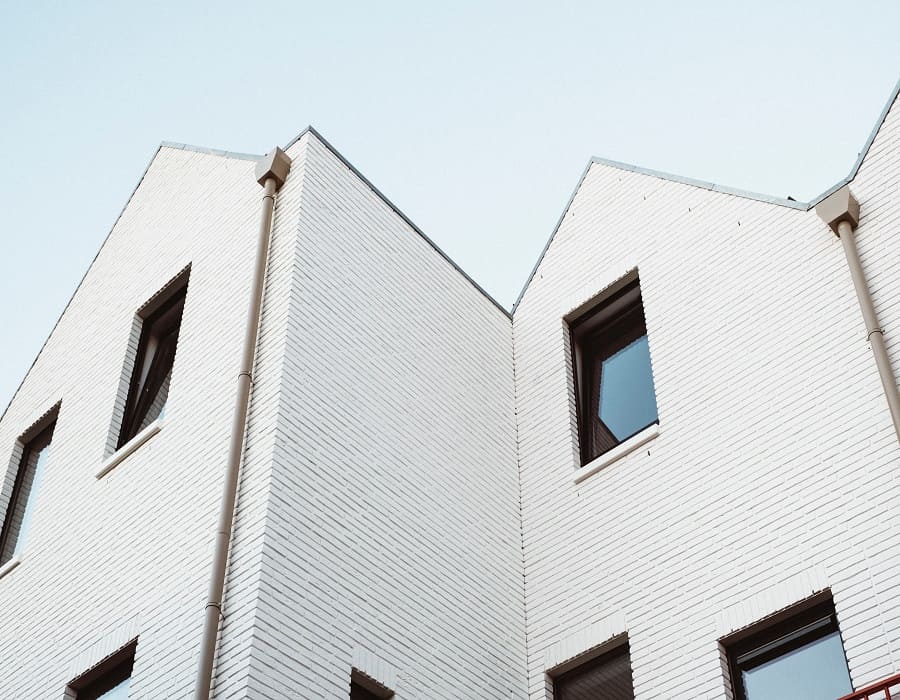When it comes to managing rainwater and protecting your home from potential water damage, the terms “eavestrough” and “gutter” are often used interchangeably. However, there are subtle differences between the two that can impact their functionality and installation.
In this comprehensive article, we’ll explore the nuances of eavestrough vs gutter comparing their designs, materials, installation processes, and maintenance requirements. .
Difference between eavestrough and gutter
Here is the basic difference in gutter vs eavestrough in terms of different aspects;
- Eavestroughs:
Eavestroughs, also known as rain gutters, are components installed along the eaves of a roof to collect and redirect rainwater away from the building’s foundation.
These troughs are typically made of aluminum, steel, or vinyl and come in various shapes and sizes. Eavestroughs are attached to the fascia board, and their primary function is to prevent water damage to the foundation, siding, and landscaping.
- Gutters:
Gutters, on the other hand, encompass a broader category that includes eavestroughs. Gutters refer to any channel designed to collect and direct water, and they can be found on various parts of a building.
While eavestroughs are specific to the eaves or overhangs of a roof, gutters can be installed on flat roofs, along the edges of sloped roofs, or even integrated into the structure of a building.
Material Variations
- Eavestrough Materials:
Eavestroughs are commonly manufactured from materials like aluminum, steel, or vinyl. Aluminum eavestroughs are lightweight, resistant to corrosion, and easy to install. Steel eavestroughs, though heavier, offer durability and are suitable for regions with harsh weather conditions.
Vinyl eavestroughs are lightweight, affordable, and resistant to rust, but they may lack the longevity of aluminum or steel.
- Gutter Materials:
Gutters, as a broader category, can be made from a wider range of materials, including copper, zinc, and even wood. Copper gutters are known for their aesthetic appeal and resistance to corrosion, while zinc gutters offer similar benefits at a lower cost.
Wooden gutters, though less common due to maintenance challenges, provide a classic, natural look.
Design and Shape
- Eavestrough Design:
Eavestroughs are typically U-shaped, forming a trough that captures rainwater as it flows down the roof. The design is tailored to efficiently channel water towards downspouts, preventing overflow and pooling.
- Gutter Design:
Gutters come in various shapes, including half-round, K-style, and box gutters. Half-round gutters have a semicircular cross-section, offering a classic aesthetic.
K-style gutters, with a shape resembling the letter “K,” are popular due to their efficiency and capacity to handle larger water volumes. Box gutters, though less common, are often integrated into the building’s structure for a seamless appearance.
Installation Considerations
- Eavestrough Installation:
Eavestroughs are typically attached to the fascia board beneath the roofline. Installation involves securing brackets along the eaves and connecting the eavestrough sections. Proper slope and alignment are crucial for optimal water flow.
- Gutter Installation:
Gutter installation varies based on the type of gutter chosen. K-style gutters are often hung from the fascia board, while half-round gutters may require additional brackets. Box gutters, integrated into the building’s design, involve more complex installation procedures.
Maintenance and Cleaning
- Eavestrough Maintenance:
Regular maintenance of eavestroughs involves clearing debris, leaves, and dirt to prevent clogs. Periodic inspections for rust and damage are essential to ensure proper functionality.
- Gutter Maintenance:
Gutters, depending on the material, may require different maintenance approaches. Copper gutters develop a patina over time, adding to their aesthetic appeal, while steel gutters may need rust prevention measures. Regular cleaning is essential for all gutter types to prevent clogs and maintain efficient water flow.
Geographic Considerations
- Eavestroughs in Different Climates:
Eavestroughs are widely used in regions with moderate climates, as they effectively handle typical rainfall patterns. In areas prone to heavy snowfall, consideration must be given to snow and ice buildup, which can affect the performance of eavestroughs.
- Gutters in Different Climates:
Gutters, being a more versatile category, can be adapted to various climates. For example, in regions with frequent rainfall, a high-capacity gutter system may be preferred, while in colder climates, gutter heating systems may be necessary to prevent ice dams.
Cost Considerations
- Eavestrough Costs:
The cost of eavestroughs is influenced by factors such as material, length, and installation complexity. Aluminum eavestroughs are generally more affordable than steel or vinyl options.
- Gutter Costs:
Gutter costs vary based on material and design. Copper gutters tend to be more expensive, while vinyl gutters are budget-friendly. The overall cost also includes installation, which may differ depending on the complexity of the chosen gutter system.
Aesthetics and Curb Appeal
- Eavestrough Aesthetics:
Eavestroughs, with their U-shaped design, are often considered utilitarian. While they are essential for functionality, their appearance may not be as visually appealing as certain gutter designs.
- Gutter Aesthetics:
Gutters offer a wider range of aesthetic options, especially with the availability of different shapes and materials. Copper gutters, for example, develop a distinctive patina that adds character to a building. The choice of gutter design can contribute significantly to the overall curb appeal of a structure.
Conclusion
In summary, while the terms Eavestrough vs gutter are often used interchangeably, there are nuanced differences between the two. Understanding these differences, along with considering factors such as material, design, installation, maintenance, and aesthetics, is crucial for making informed decisions based on specific needs and preferences.
Whether it’s protecting a home’s foundation from water damage or enhancing the visual appeal of a building, the choice between eavestroughs and gutters should align with the unique requirements of the structure and its environment.

